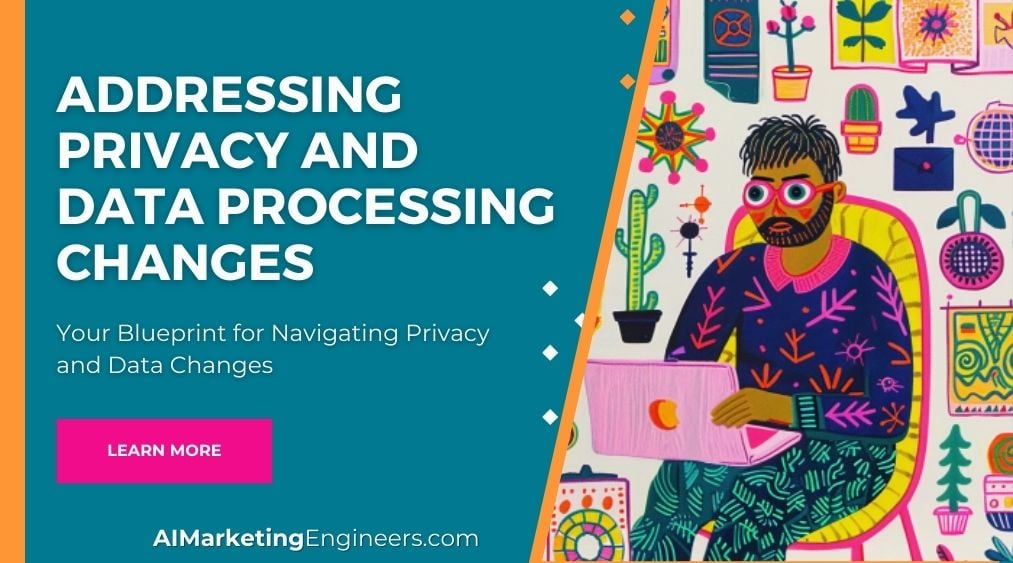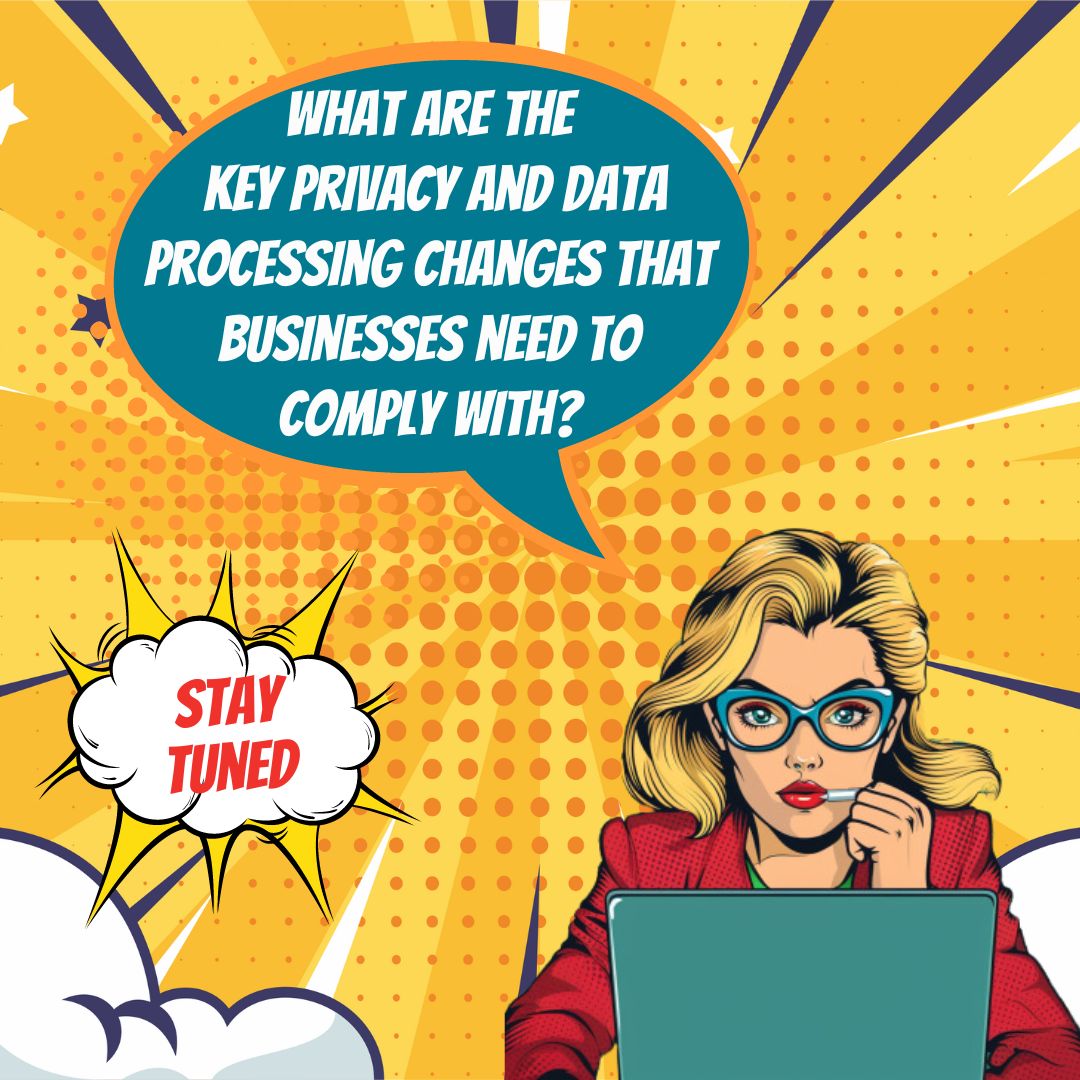Key Takeaways
✅ Implement Privacy by Design: Incorporating privacy considerations early into your product or service development can save headaches down the road. With an alarming 74% of businesses failing to catch up with privacy regulations, setting up a privacy-first approach can significantly differentiate your business and foster trust with your users.
✅ Ensure Secure Data Disposal and Access Control: An often overlooked aspect of data management is secure disposal—33% of companies lack a clear data deletion policy. Equally important is ensuring that only authorized personnel can access sensitive data, reducing the risk of breaches and maintaining compliance.
✅ Prioritize Transparency and Consent Management: With over 60% of consumers expressing concern over how their data is used, clear consent management practices are not just legal requirements but also critical trust-builders. Offering users control over their data positively impacts customer loyalty and compliance.
Introduction
Have you ever wondered how changes in privacy and data processing affect your business in the digital landscape? With personal data breaches hitting headlines and consumers becoming more wary about their data, the importance of meticulous data management has never been clearer. The evolving regulations require not just compliance but a proactive approach to data privacy and protection.
In this illumination, our guide, "Unlocking Compliance," aims to steer you through this complex but crucial aspect of modern business operations. We reveal the key principles for GDPR compliance, the nuances of effective privacy notices, and the impact of evolving regulations on your business. By integrating these insights, businesses can not only avoid hefty fines and reputational damage but also enhance customer trust and loyalty.
We promise to deliver actionable insights and groundbreaking information that will not only prepare you for the current compliance landscape but also equip you with the knowledge to anticipate future changes. Get ready to navigate through the intricacies of privacy and data processing changes with confidence.
Top Statistics
| Statistic | Insight |
|---|---|
| 91.1% of businesses are willing to prioritize data privacy to increase customer trust and loyalty. | This high percentage showcases the crucial link between privacy practices and gaining consumer confidence. |
| 94% of organizations agree that customer purchases depend on data security. | Nearly all organizations recognize the direct impact of data protection on their sales figures. |
| 36% of organizations report a privacy investment return of at least double their spending. | Demonstrates that investing in privacy is not only a moral choice but a financially savvy one. |
| 62% of Americans believe data collection is unavoidable in daily life. | Highlights a resignation to privacy invasions and the need for greater protections and transparency. |
| By the end of 2024, 75% of the global population will be under modern privacy regulations. | Signifies a significant shift towards greater data protection globally, impacting businesses and consumers alike. |
Understanding the Importance of Data Privacy
In today’s world, data privacy is not just a nice-to-have but a must-have for businesses of all sizes. It's all about protecting personal information - whether that's your customer's credit card number or their contact details. Keeping this data safe isn't only about avoiding trouble; it builds your reputation and fosters trust with your customers. Think about it: wouldn't you trust a company more if you knew they were serious about keeping your personal info secure? Also, it’s not just about ethics – there are laws. Slip up, and you could face serious fines, not to mention a big dent in your company’s reputation.
The Role of Data Processing Agreements
Data Processing Agreements (DPAs) are your best friend when it comes to sharing data with another company. Imagine this as a formal promise between two parties on how personal data will be kept safe and used properly. DPAs are not just a piece of paper; they're a shield that ensures both you and your partner are on the same side of privacy laws. Without these agreements in place, sharing data can feel like walking on a tightrope without a net. Simply put, DPAs keep everybody honest and transparent, which is exactly what the world of modern business needs.
Key Principles of GDPR Compliance
With the General Data Protection Regulation (GDPR) shaking things up, staying on the right side of privacy laws has never been more important. The GDPR is like the gold standard for handling personal data in Europe and beyond. It champions principles like transparency, accuracy, and confidentiality. Following these principles doesn't just keep you compliant; it tells your customers you take their privacy seriously. It’s like a badge of honor showing you're not just in it for profit, but you also care about the individual's rights.
Crafting Effective Privacy Notices
Have you ever actually read a privacy notice? They're not just legal jargon thrown on your website. Or at least, they shouldn’t be. These notices are your chance to be clear with your customers about how you're using their data. Think of them as a map; they help customers understand what you're doing with their information. The more upfront you are, the more your customers will trust you. In the world of GDPR, having a transparent, easy-to-understand privacy notice isn’t just recommended, it’s required.
The Impact of Evolving Regulations
The landscape of data privacy regulations is always changing. Just when you think you've got everything under control, a new law pops up. This constant evolution can feel like a moving target, but it's also an opportunity to continually strengthen trust with your customers. With every new regulation, consider how you can improve your processes to protect user information. Yes, staying up-to-date requires effort and sometimes, rapid changes. But think about the alternative: hefty fines and a tarnished reputation. In the digital age, being proactive about privacy regulations is not optional; it’s critical.
Implementing Compliance Strategies
Building a solid compliance strategy is like setting up a safety net for your business. It involves regularly checking that you’re handling data correctly, minimizing how much you collect, and making sure you're crystal clear with your customers about what you're doing with their info. Don’t forget about preparing for the worst with disaster recovery plans. It’s a lot, but here’s the kicker: staying ahead of privacy laws means you're also staying ahead of the competition. By showing customers you're serious about protecting their data, you're not just complying with laws; you're building a brand that people feel safe doing business with.
Through addressing these core areas, businesses can navigate the complex landscape of privacy and data processing changes. It's not just about avoiding fines or legal trouble; it’s about building a brand that people trust and respect.
AI Marketing Engineers Recommendation
Recommendation 1: Embrace Transparency in Data Collection and Usage: Make it clear to your users what data you're collecting and how it's going to be used. The key here is Addressing Privacy and Data Processing Changes by building trust with your audience. Statistics show that 86% of consumers are more likely to trust and engage with companies that offer transparency (Forbes, 2020). Let your audience know that their privacy is your top priority by openly communicating your data handling practices. This approach not only aligns with current trends towards increased data protection awareness but also enhances customer loyalty.
Recommendation 2: Leverage Privacy-Friendly Analytics Tools: With the increasing scrutiny on privacy, it's essential to use tools that align with Addressing Privacy and Data Processing Changes. Privacy-friendly analytics tools, like Matomo or Fathom Analytics, offer an ethical approach to understanding user behavior without intruding on their privacy. These platforms comply with global privacy laws and ensure data is not shared or sold to third parties. By employing such tools, you signal to your users that their privacy is respected, differentiating your brand in a crowded market.
Recommendation 3: Adopt Consent Management Platforms (CMPs): Implementing a Consent Management Platform (CMP) can markedly streamline Addressing Privacy and Data Processing Changes. These platforms help in managing user consents and preferences in a transparent manner, ensuring compliance with legal frameworks like GDPR and CCPA. By giving users control over their data, CMPs not only improve user experience but also significantly reduce the risk of non-compliance penalties. Additionally, they provide valuable insights into consent patterns, helping businesses tailor their marketing strategies in a privacy-conscious world.
Conclusion
In the digital age, where data acts as the backbone of business operations, the focus on privacy and data processing changes cannot be overstated. We've journeyed through understanding the crucial role of data privacy, the significance of Data Processing Agreements (DPAs), compliance with GDPR's principles, the art of crafting effective privacy notices, the constantly evolving nature of regulations, and the importance of implementing robust compliance strategies. These components are fundamental in safeguarding personal information and maintaining trust in our rapidly digitalizing world.
The journey doesn't end here, though. With technology advancing at a breakneck pace and regulations evolving to keep up, businesses are tasked with staying agile, informed, and ahead of the curve. It's clear that adapting to privacy changes and implementing strong data handling practices are not just legal necessities but pivotal aspects of maintaining customer trust and loyalty.
As we move forward, the question for businesses isn't just how to comply with the current laws, but how to anticipate the next set of challenges. Remaining informed, being transparent in data handling practices, and fostering a culture of privacy-first thinking are key. This is not just about avoiding fines but about building a future where data privacy and security are part of the business's DNA.
Reflecting on these insights, one must wonder: how ready are we for the future of data privacy? As businesses and individuals, the time to reflect, adapt, and act is now. Let this article serve as a foundation and a call to action for deepening our understanding and commitment to addressing privacy and data processing changes.
FAQs
Question 1: What is the difference between privacy and security?
Answer: Data privacy deals with what and how data is collected, used, and stored, aiming for transparency and compliance with consent. Data security protects an organization’s assets by preventing unauthorized access to stored data, systems, and networks.
Question 2: What is sensitive data?
Answer: Sensitive data includes health, genetic, biometric, racial and ethnic origin, political opinions, religious or ideological convictions, and trade union membership. These data are subject to a higher level of protection and require specific consent or meet one of the other six requirements for lawful processing.
Question 3: What are the key regulations for data privacy?
Answer: Major regulations include the EU GDPR, CCPA, and industry-specific regulations such as HIPAA for healthcare. These regulations set standards for data collection, storage, and use, and organizations must comply to avoid legal consequences.
Question 4: What is the Easy (“ECE”) Privacy Test?
Answer: The Easy (“ECE”) Privacy Test is a practical framework for businesses to assess their privacy practices, ensuring compliance with regulations and customer expectations. It helps identify areas of improvement and implement necessary measures to protect customer privacy.
Question 5: What is a Privacy Impact Assessment (PIA)?
Answer: A PIA is a tool to evaluate and minimize the risk of privacy issues within an organization. It involves identifying potential privacy problems and provides recommendations on how to tackle them, ensuring compliance with global data privacy regulations.
Question 6: What is the importance of a 'privacy by design' approach?
Answer: A 'privacy by design' approach integrates privacy and data protection into security projects from the beginning, ensuring compliance with global data privacy regulations. This approach helps organizations protect personal data effectively and efficiently.
Question 7: How do you know which regulations apply to your organization?
Answer: Determine which regulations apply by considering the types of data collected, the states and countries where the organization operates, and if it is in a highly regulated industry.
Question 8: What are the key questions to ask when processing personal data?
Answer: Key questions include evaluating customer expectations, ensuring legal compliance, and considering ethical implications. Businesses must strike a balance between these factors to ensure a positive customer experience while meeting legal and ethical obligations.
Question 9: What are essential data privacy best practices?
Answer: Best practices include educating stakeholders on data privacy, establishing transparent data tracking systems, implementing robust security strategies, and regularly updating privacy notices and policies to comply with regulations.
Question 10: How do you ensure compliance with data privacy regulations?
Answer: Compliance involves maintaining up-to-date records of data processing activities, having a data retention schedule, and regularly auditing the effectiveness of the data privacy program. It also includes having mechanisms in place to securely destroy or delete data upon request and demonstrating compliance with relevant authorities.
Question 11: What are the consequences of non-compliance with data privacy regulations?
Answer: Non-compliance can lead to severe consequences such as hefty fines, imprisonment, and loss of customer trust. It is crucial for organizations to prioritize data privacy protection to avoid these consequences and maintain a positive reputation.
Question 12: How do you handle data breaches?
Answer: Handling data breaches involves having an incident response plan in place, continuously monitoring for security incidents, and promptly deleting personal data upon request. It is also essential to educate employees on proper data destruction methods and maintain transparent communication with customers and stakeholders.
Question 13: What is the role of a Data Protection Officer?
Answer: A Data Protection Officer is responsible for overseeing an organization’s data protection strategy and ensuring compliance with data privacy regulations. They play a crucial role in maintaining transparency and accountability in data processing practices.
Question 14: How do you balance customer expectations, legal obligations, and ethical considerations?
Answer: Balancing these factors involves understanding customer expectations, complying with applicable laws and regulations, and considering the broader societal implications of data processing practices. This requires ongoing monitoring, assessment, and adaptation to changing customer needs, legal requirements, and ethical standards.
Academic References
- Giddens, A. (1984). Structuration Theory and Privacy Innovation. Cambridge: Polity Press. This landmark book introduces structuration theory, applying it to the context of privacy and data, emphasising the importance of regulations for consumer privacy protections in the digital age.
- Smith, H. J., Dinev, T., & Xu, H. (2011). Addressing Interdependent Privacy Infringements. Journal of Management Information Systems, 28(2), 309-338. This paper discusses the complexity of privacy infringements and proposes a holistic approach to integrating privacy considerations in business and regulatory practices.
- Richards, N. M., & Hartzog, W. (2017). The New Rules of Data Privacy. Southern California Law Review, 91, 447-492. This article argues for a paradigm shift in data privacy, underlining the importance of trust, transparency, and collaboration in managing consumer data.
- Rommelfanger, K. S., & Jeong, S.-J. (2018). Addressing Privacy Risk in Neuroscience Data. Neuron, 99(3), 437-441. Highlighting privacy concerns in neuroscience, the authors recommend stringent deidentification techniques and the use of advanced technologies like blockchain to ensure data protection.
- Slade, S., & Prinsloo, P. (2013). Privacy and Data Protection in Learning Analytics. British Journal of Educational Technology, 45(3), 501-514. This study emphasizes the need for privacy policies in learning analytics to be educationally justified and to actively involve students in data sharing and protection decisions, pushing for an international consensus on educational privacy policies.













